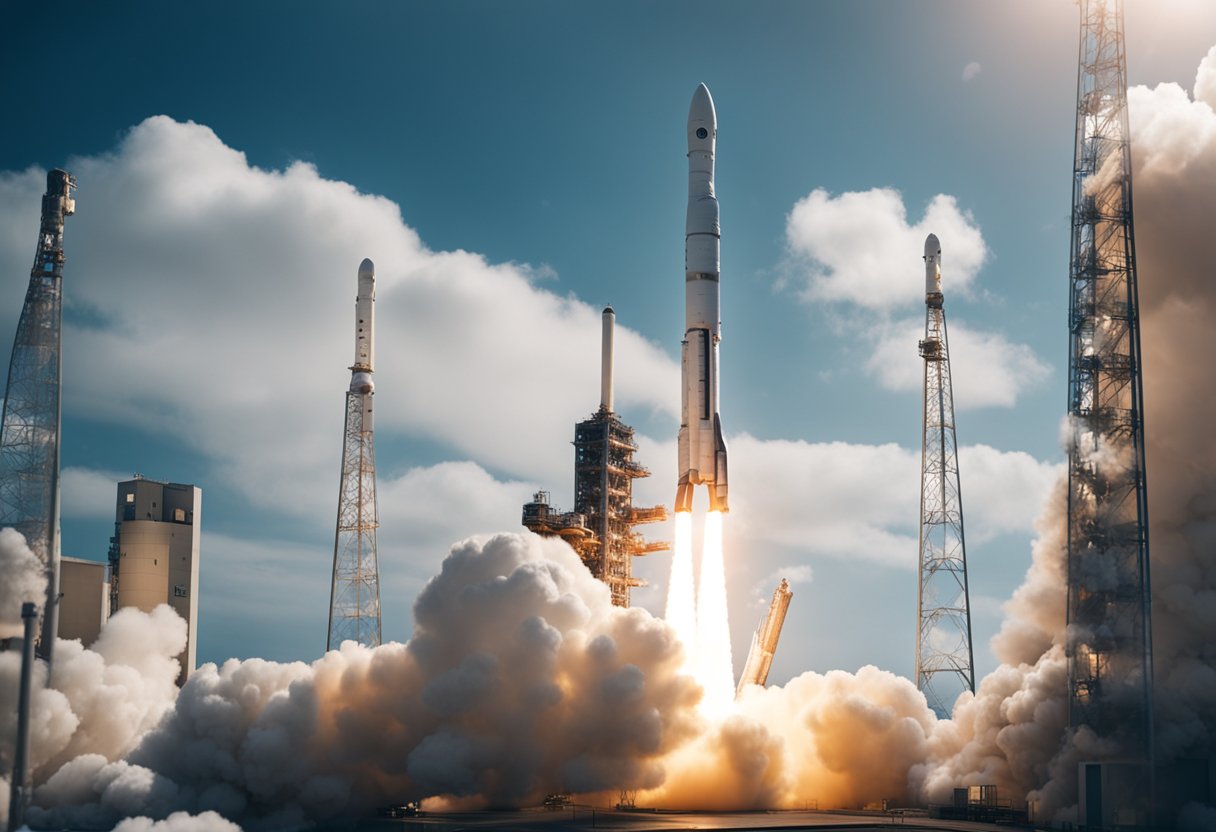
Space Exploration for Kids – Space exploration is an incredible journey that extends beyond our home planet Earth and into the vastness of the cosmos. It’s a realm filled with wonders like distant galaxies, mysterious planets, and awe-inspiring cosmic phenomena. For us, learning about space not only satisfies our innate curiosity about the universe but also teaches us valuable science lessons. By studying space, students and children can discover how the universe operates, the history of our solar system, and the potential for future space travel.
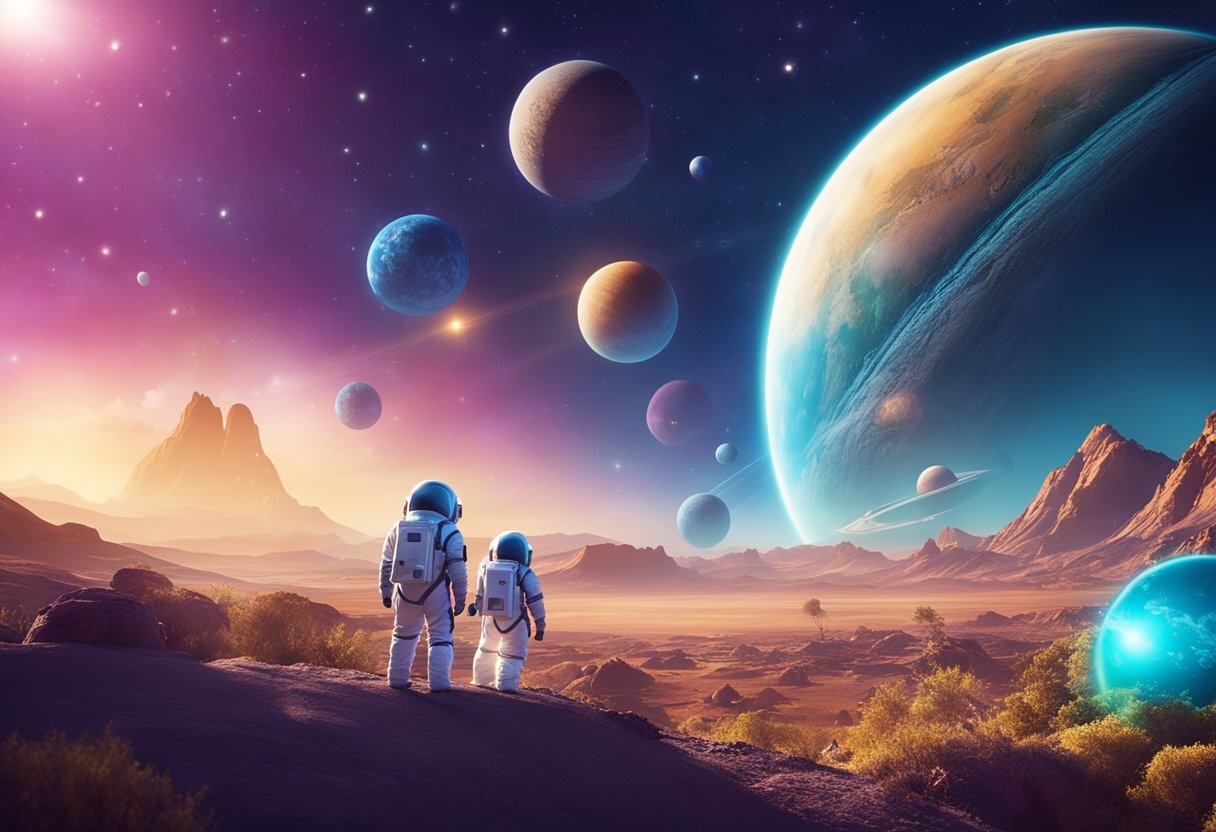
As we explore the universe, we’re following in the footsteps of historical milestones that have defined human space exploration. From the first human-crafted satellites orbiting Earth to the International Space Station where astronauts live and work, each step has expanded our knowledge and capabilities in space. Our understanding of space science continues to grow with every spacecraft we send to probe the hidden secrets of other planets and stars. Plus, children can engage in space activities and education that inspire a new generation of explorers and scientists.
Our exploration is not just about travelling into space; it’s also about looking ahead. We consider the effects of space travel on the environment and the importance of international collaboration in space efforts. For those younger enthusiasts, early space tourism ventures, like SpaceVoyageVentures.com, provide exciting insights into the future of space travel available or soon-to-be available.
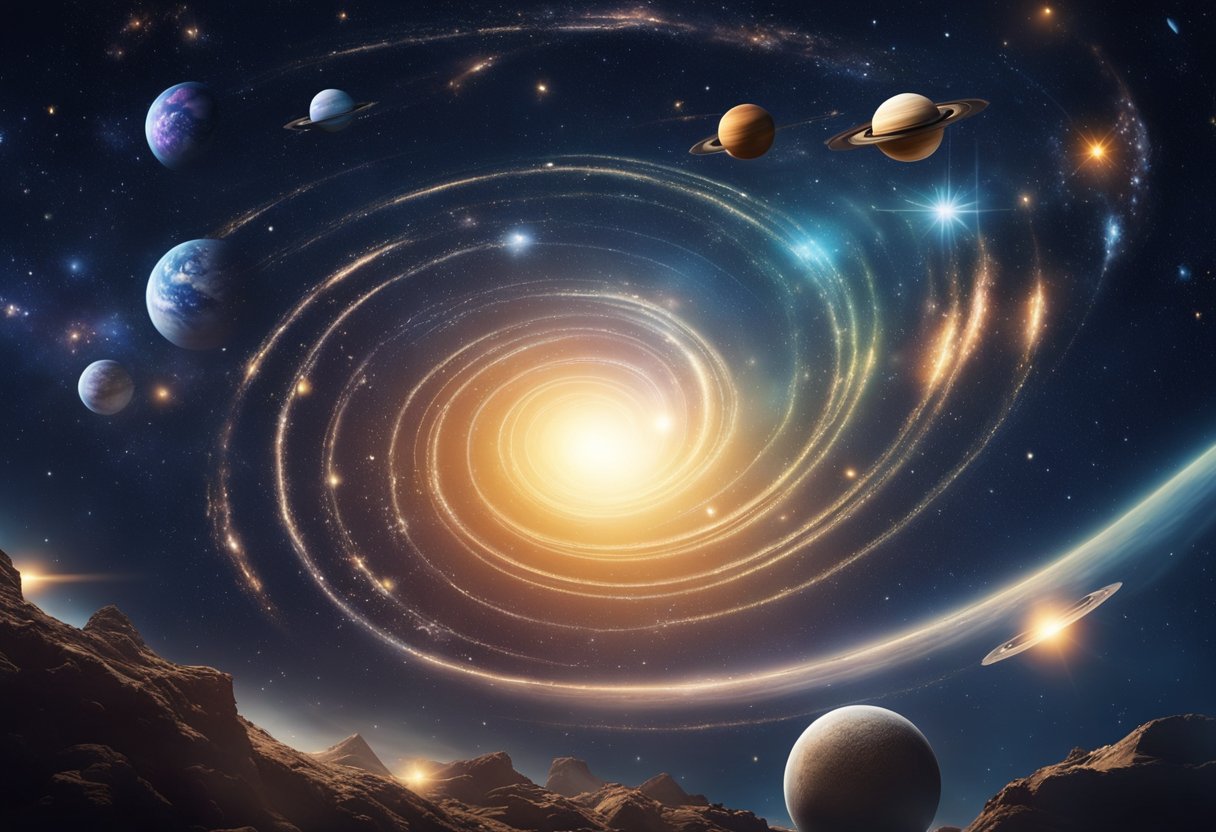
The cosmos is an immense expanse filled with intriguing celestial bodies and phenomena. As we venture into space, each discovery enriches our understanding of the universe’s composition and the intriguing dynamics within it.
Galaxies are vast collections of stars, gas, dust, and dark matter, often spanning millions of light-years across. Our own galaxy, the Milky Way, is home to our solar system and up to 400 billion stars. Stars, the fundamental building blocks of galaxies, are immense spheres of hot gas that emit light and heat; their life cycles from birth in nebulae to potential ends as supernovae are fundamental to cosmic evolution.
Within our solar system, we find a variety of planets, each with its unique characteristics. Terrestrial planets like Earth and Mars feature solid surfaces, while gas giants such as Jupiter and Saturn are composed primarily of hydrogen and helium. Many of these planets are accompanied by moons that orbit them, like Earth’s Moon, which has a profound impact on our planet’s tides.
Comets are icy bodies that release gas or dust as they approach the sun, creating visible tails that can be seen from Earth. Asteroids are rocky objects that mostly linger in the asteroid belt between Mars and Jupiter. These celestial objects offer clues to our solar system’s formation and past.
The Sun, a massive star at the center of our solar system, is critical for life on Earth. Its gravitational pull keeps the planets in orbit, and its energy drives our climate and weather. The Sun’s magnetic field protects our solar system from high-energy particles flying through interstellar space.
Beyond our solar system lies the interstellar space, an area filled with cosmic dust, gas, and the potential for new stars to form. It’s the region where the influence of the Sun’s gravity and solar wind ceases, and we step into the vastness of the galaxy. Further exploration in this expanse could unravel the mysteries of the universe, laying the foundation for ventures like those documented on early space tourism websites such as SpaceVoyageVentures.com.
As we continue our celestial journey, the synergy between telescopes and science enhances our vision of the universe, allowing us to reach further into the cosmic unknown.
Space exploration has delivered some of the most remarkable milestones in our history, transforming our understanding of the universe and our place within it. We’ve ventured beyond Earth’s atmosphere, set foot on other celestial bodies, and constructed homes in the harshness of space.
The dawn of the Space Age was marked by the launch of Sputnik 1 by the Soviet Union on 4 October 1957. This event is significant as it was the first human-made object to orbit the Earth, signifying the potential for future space exploration. Following this, the Soviet Union made another historic achievement with Laika, the first animal to orbit Earth aboard Sputnik 2, though tragically she did not survive the mission. These early missions catalysed the participation of the United States in space exploration, sparking a competitive push known as the Space Race.
The Apollo missions stand as a testament to human tenacity and ingenuity. NASA’s Apollo 11 made history when Neil Armstrong became the first man to step on the moon on 20 July 1969, uttering the famous words, “That’s one small step for man, one giant leap for mankind”. This monumental event was not only a victory for the United States but also an inspiring moment for all of humanity, illustrating that the bounds of human exploration are ever-expanding.
In the subsequent years, the launch of the Space Shuttle by NASA signalled the beginning of a new era in space exploration. The reusable shuttle facilitated numerous missions, including the deployment of the Hubble Space Telescope, which has provided unparalleled views of the universe. Moreover, our collaborative efforts have led to the construction and operation of the International Space Station (ISS), a symbol of international partnership, and a microgravity laboratory that has been continuously inhabited since November 2000. Through these platforms, we’ve conducted critical research and expanded our capacity for sustaining humans in space, potentially paving the way for the future of space tourism as envisioned by entities like SpaceVoyageVentures.com.
Space exploration has brought forth an array of sophisticated machines that journey beyond our planet. These spacecraft are critical in accumulating knowledge about the universe, testing new technologies, and expanding our capabilities in space.
Rockets and launch vehicles are the powerful engines that propel spacecraft out of Earth’s atmosphere. These marvels of engineering are designed to withstand extreme temperatures and the gravitational forces encountered during lift-off. For instance, NASA’s space shuttles, which were in service until 2011, utilised reusable rockets called Solid Rocket Boosters, showcasing a significant advancement in rocket technology.
Robotic rovers, such as NASA’s Curiosity, Spirit, Opportunity, and Sojourner, have been essential in our drive to understand the Martian landscape. Unmanned and autonomous, these rovers are equipped with scientific instruments to analyse soil, rocks, and the atmosphere. Probes like these enable us to investigate the harsh environments of other planets, moons, and celestial bodies without the risks involved in manned missions.
Orbiters and satellites operate from space to relay information back to us on Earth. They range from telescopes like the Hubble, which peers deep into space, to artificial satellites that monitor our own planet’s weather patterns and telecommunications systems. The technology that underlies these systems is crucial, as it enables continuous exploration and observation from a vantage point unreachable by other methods.
In this way, by employing diverse types of spacecraft, we expand our horizons and lay the groundwork not only for further scientific discovery but also for potential future endeavours in space tourism as seen on websites like SpaceVoyageVentures.com.
In this section, we’ll explore the aspects of space science that help us understand the universe’s complexities, from the behaviour of cosmic objects to the principles governing space physics.
Astronomy is the science that allows us to observe and understand celestial bodies like stars and galaxies. By using telescopes, astronomers can look deep into the cosmos to uncover its secrets. The Hubble Space Telescope has been instrumental in this field, providing us with detailed images of distant stars. The James Webb Space Telescope takes this further, designed to study every phase in the history of the universe.
Astrophysics focuses on the nature and properties of these celestial entities. It encompasses the study of gravity and other forces that explain not only the movement of planets but also the life cycles of stars. Understanding astrophysics is crucial as it combines elements of physics and earth science to give us a clearer picture of how the universe works.
Space physics delves into the physical phenomena occurring within the heliosphere and wider universe. This includes the study of space weather and the effect of solar wind on the Earth’s magnetosphere. As we venture further into understanding gravitation, our knowledge in space-related physics grows, supporting future endeavours in space exploration and potential space tourism as documented by platforms like SpaceVoyageVentures.com.
Learning about these fundamental principles is essential for us to continue pushing the boundaries of what’s possible, whether it’s for scientific discovery, protecting our planet, or paving the way for space tourism.
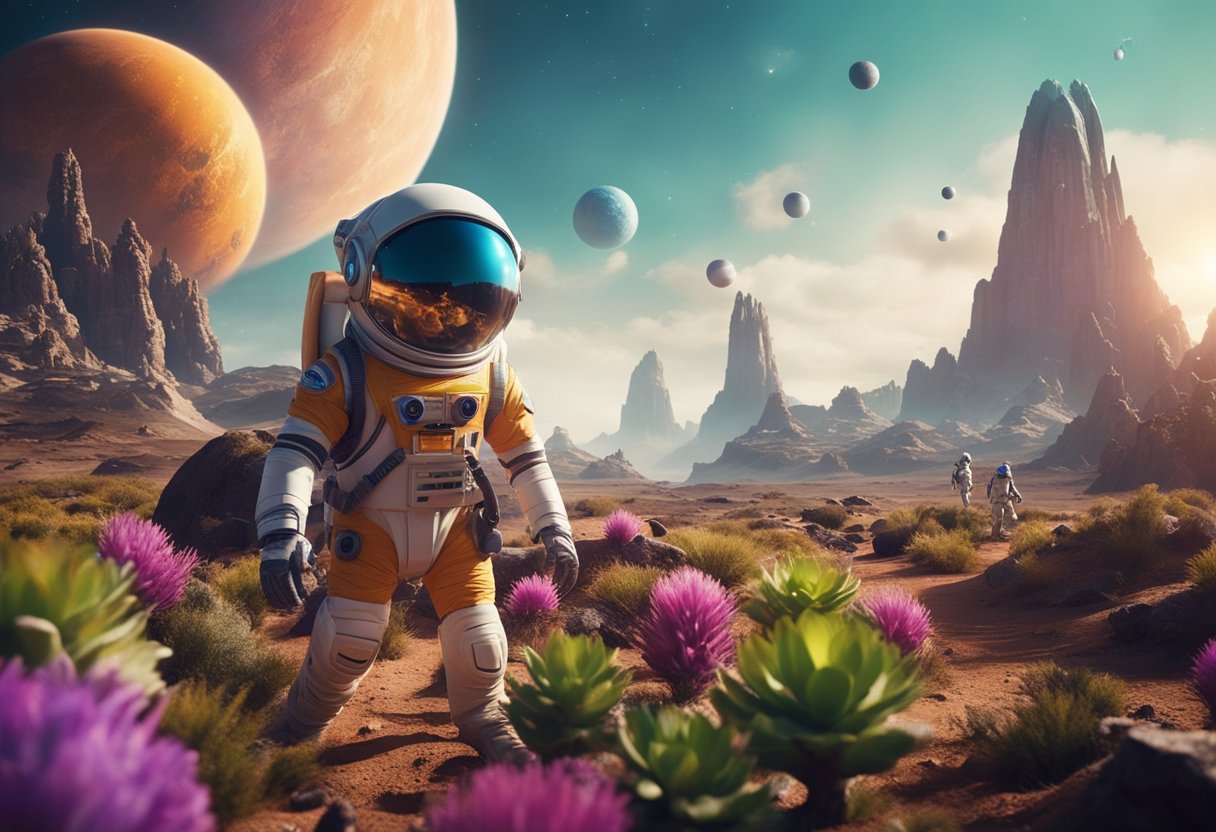
In our pursuit of understanding the cosmos, one of the most thrilling areas is astrobiology – the study of life’s potential beyond Earth. This field combines the efforts of many scientific disciplines to explore the origins, evolution, and existence of life in the universe.
Our search for life starts with finding planets outside our solar system, known as exoplanets. These celestial bodies orbit stars other than our Sun. With advanced telescopes and observational techniques, we’ve identified thousands of exoplanets, some of which lie within the habitable zone—the region around a star where conditions might be just right for life as we know it.
Our excitement peaks when we discover exoplanets with characteristics similar to Earth, as these planets might have liquid water—a key ingredient for life. Take, for example, the intriguing moons in our solar system like Europa, an ice-covered moon of Jupiter, which is believed to harbour a subsurface ocean that could sustain extraterrestrial life.
We at SpaceVoyageVentures.com are also keeping an eye on these discoveries, envisioning a future where space tourism could extend to visiting habitable exoplanets or moons like Europa, once technology permits safe and feasible interplanetary travel.
We enter an era where cosmic endeavours no longer belong solely to science fiction. Human spaceflight has catapulted us from Earth to the Moon, and for over two decades, a human presence has been maintained on the International Space Station (ISS). Here, we’ll explore the training of astronauts, life in microgravity, and what lies ahead for manned missions.
Before embarking on space missions, astronauts undergo stringent training programmes. They prepare extensively for the demanding conditions of space travel and the essential tasks they must perform during missions. At various institutions, including the National Aeronautics and Space Administration (NASA), potential spacefarers learn to operate spacecrafts, conduct scientific research, and manage emergency situations. They experience simulated microgravity and familiarise themselves with the sensation of weightlessness, often by flying in zero-gravity aircrafts.
Life aboard spacecraft like the ISS introduces humans to the unique challenge of microgravity. In this environment, astronauts’ human physiology adapts in various ways:
However, through regular exercise and scientific countermeasures, these effects are mitigated. The ISS serves as both home and laboratory, where astronauts live and conduct experiments that contribute to our understanding of life beyond Earth.
As we look to the future, manned missions continue to evolve with ambitious goals. Plans include returning to the Moon and possibly voyaging to Mars. The role of private space tourism enterprises, such as SpaceVoyageVentures.com, is expanding, offering the public a glimpse at the possibility of space travel. These developments promise to redefine the boundaries of our exploration and the scope of human experience in the cosmos.
We acknowledge the contributions and brave endeavours of all astronauts and cosmonauts who have and will venture into space, expanding our knowledge and capabilities among the stars.
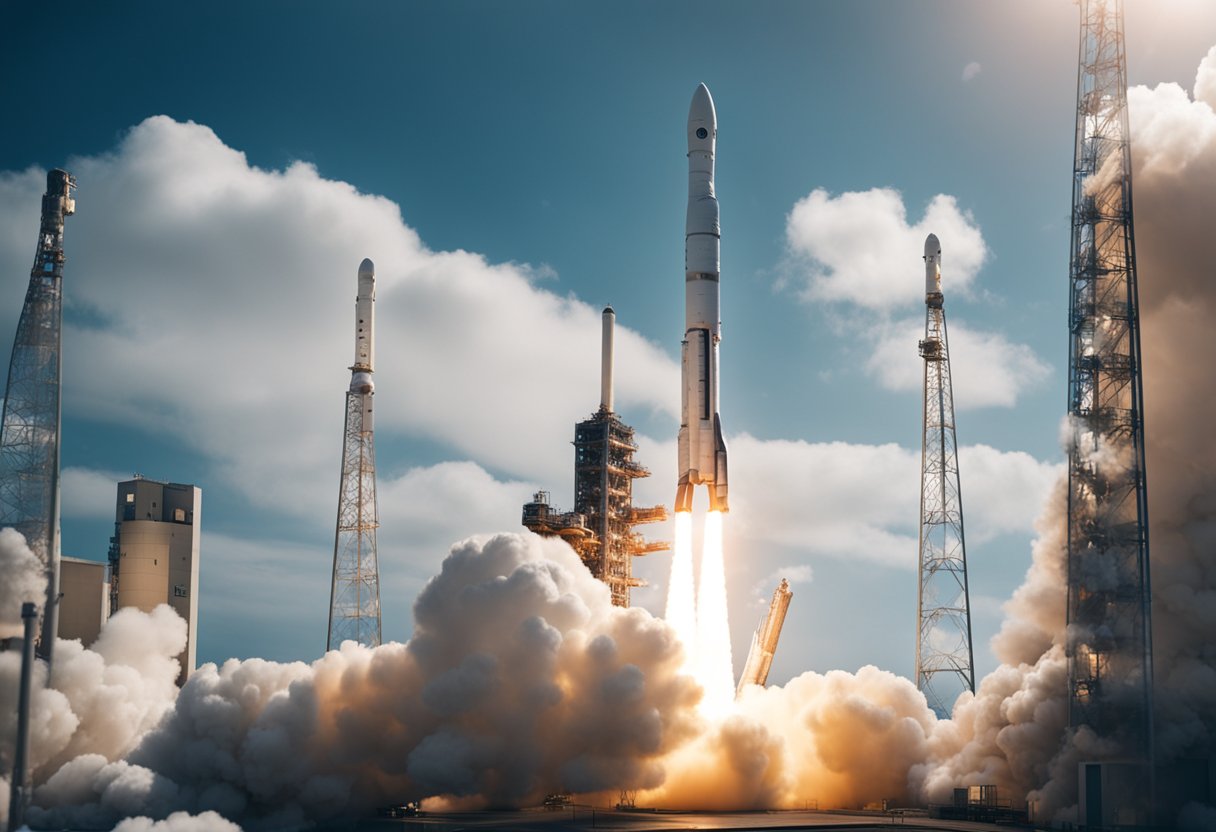
In this section, we’ll explore how next-generation spacecraft and robotics are shaping the future of space exploration, utilising the latest advancements in technology, engineering, and mathematics to push the boundaries of what’s possible.
Next-generation spacecraft are the pinnacle of modern engineering and technology. These vessels are designed for enhanced performance, sustainability, and safety in the harsh environment of space. One such initiative is NASA and ESA’s Artemis mission, which represents a significant leap forward. The first uncrewed flight of the Artemis rocket has already circled the Moon, paving the way for the subsequent manned mission that aims to land on the lunar surface in 2024. Alongside government agencies, private companies like SpaceX are ambitiously working towards enabling space tourism and have plans for a tourist mission around the Moon.
SpaceVoyageVentures.com, a burgeoning space tourism website, details current and prospective space travel experiences, highlighting the strides being made in making space more accessible.
The application of artificial intelligence (AI) and robotics in space exploration is a game-changer. AI systems can process vast amounts of data rapidly, making informed decisions that would take humans much longer. Robotics, on the other hand, allows us to explore environments too dangerous or distant for astronauts. For instance, robotic rovers have traversed the terrain of Mars, collecting and relaying critical data back to Earth. This combination of AI and robotic technology considerably broadens our capabilities, making missions safer and more efficient. It enables us to carry on with explorations that extend beyond our physical reach, pushing the frontiers of the known universe.
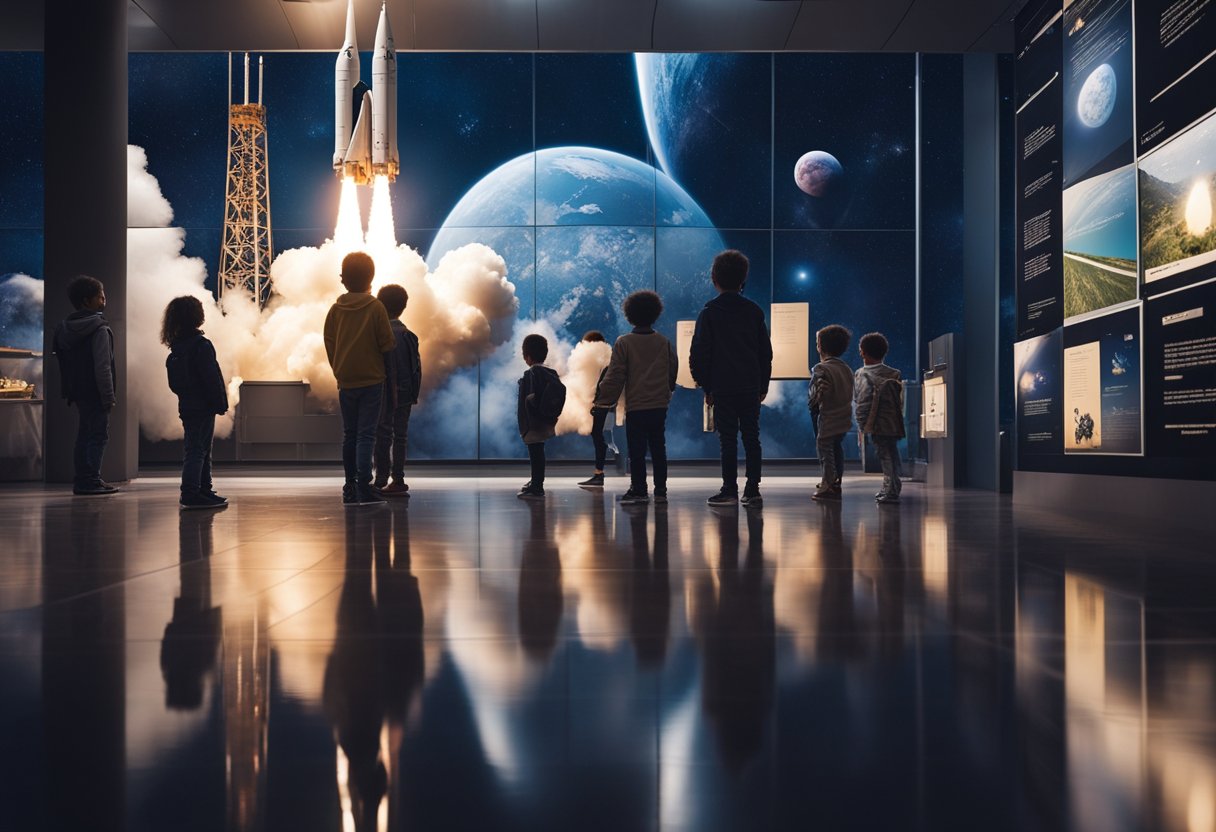
In this section, we explore various educational activities that make learning about space both fun and engaging for students. Through interactive games, hands-on science projects, and creative art challenges, educational institutions can provide a comprehensive understanding of space exploration.
NASA Space Place: A treasure trove for young minds, this platform offers a multitude of interactive games and activities. Students can navigate spacecraft through mazes, and play solar system-related games to reinforce their understanding of space.
For those keen on science, undertaking projects and experiments related to space exploration can be an insightful experience. From building model rockets to simulating crater formations, these activities enable students to grasp complex scientific concepts practically.
Space education is not limited to science; it also extends to art and creativity. Students can design their own astronaut gear or participate in art challenges, tapping into their imagination to represent the cosmos.
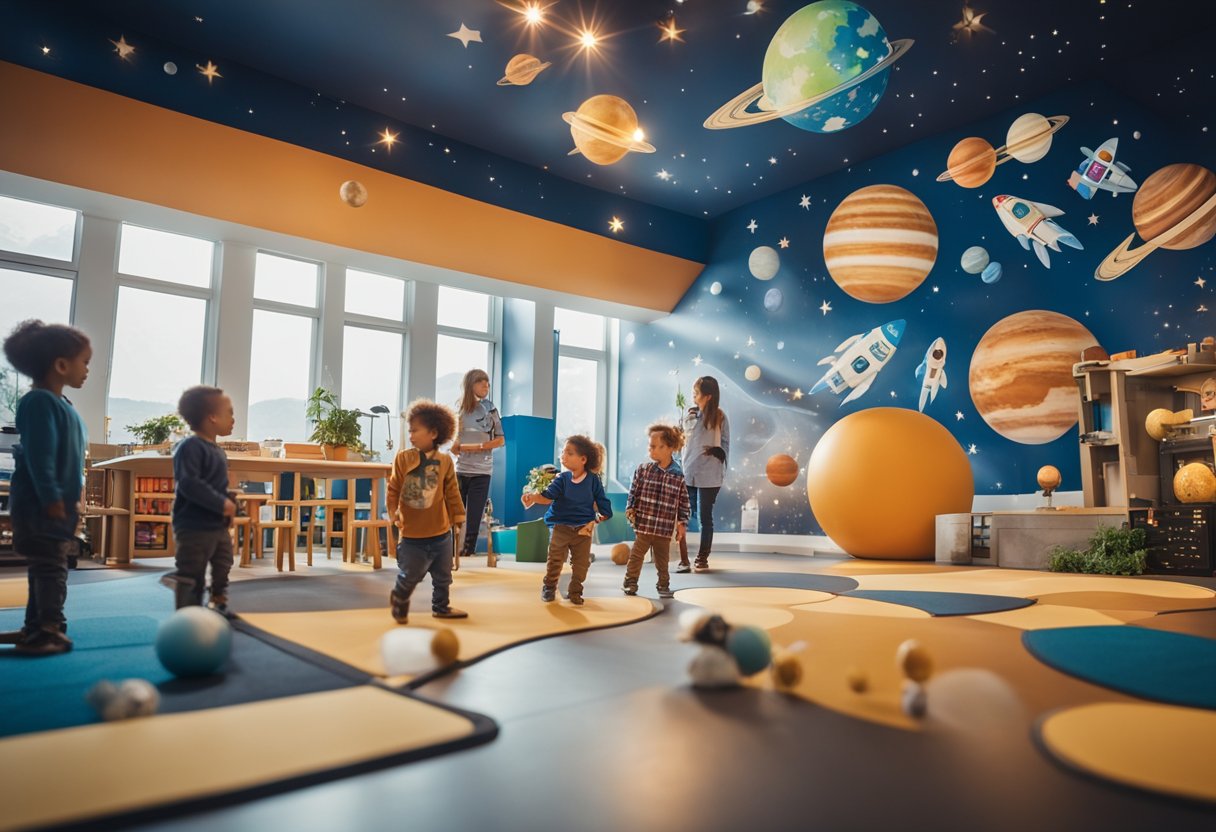
As we journey into the cosmos, we must understand the impacts space exploration has on environments both terrestrial and extra-terrestrial. Environmental considerations are as crucial out there among the stars as they are here on Earth, especially when discussing phenomena like space weather.
Space weather involves conditions on the Sun and in the solar wind, magnetosphere, ionosphere, and thermosphere that can influence the performance and reliability of space-borne and ground-based technological systems. It can affect our Earth’s atmosphere and climate as well as the safety of astronauts and hardware in space.
Solar Radiation: This is a significant part of space weather. Ejections from the Sun, such as solar flares, can send intense bursts of radiation towards Earth. These ejections have the potential to disturb our atmosphere and the operational capacities of satellites.
Magnetic Fields: The Earth’s magnetic field protects us from harmful solar wind, but in space, this protection is not as robust. Spacecraft must be built to withstand these magnetic variances to ensure systems remain functional.
Micrometeoroids: Tiny particles and debris in space can create hazards for both spacecraft and astronauts, which is an important environmental consideration for missions.
We recognise the important role of monitoring and understanding space weather for the safety and success of our ventures, such as those documented on SpaceVoyageVentures.com, a site exploring the burgeoning realm of space tourism. Our efforts in space must be sustainable to ensure the protection of the delicate balance that governs both our home planet’s and outer space’s environments.
Space exploration is a testament to what we can achieve when international cooperation comes into play. Agencies across the world unite, sharing resources, knowledge, and goals to push the boundaries of what we understand about space.
The National Aeronautics and Space Administration (NASA) of the United States has long been a pioneer in space exploration, but it doesn’t work in isolation. The European Space Agency (ESA), the Japan Aerospace Exploration Agency (JAXA), the China National Space Administration (CNSA), the Indian Space Research Organisation (ISRO), and the Israel Space Agency (ISA) all contribute to a global effort. Each agency often undertakes missions that, while centred on national interests, have far-reaching benefits for humanity and our understanding of space.
Cross-country or multinational missions are central to our collective progress. They allow us to share the burden of costs, distribute expertise in different areas of research, and benefit from the unique geographic locations each country offers for launches and mission control. For instance, the International Space Station Cooperation exemplifies this collaboration, housing a rotating crew of astronauts from diverse nations to conduct experiments in microgravity.
Key Missions:
Our collaborative efforts ensure that the knowledge we gain is shared globally, maximising the benefits while spreading the costs and risks. It’s through these partnerships that ambitious projects like potential space tourism ventures, as outlined on burgeoning platforms such as SpaceVoyageVentures.com, become more viable.

We often receive a myriad of questions when it comes to space exploration. Here are some common queries to satisfy your stellar curiosity:
What is Space Exploration?
Who was the first person in space?
Can we live in space?
What are space probes?
Are there any space tourism trips available?
| Question | Answer |
|---|---|
| What was the first object in space? | Sputnik, launched by the Soviet Union on 4 October 1957. |
| Can I see satellites from Earth? | Yes, many satellites are visible from Earth, especially at dusk. |
| How far have we explored space? | Humans have been to the Moon, while probes have reached interstellar space. |
Please note that as we expand our horizons, we’re constantly learning more, so keep exploring!
In this section, we’re going to answer some of the most commonly asked questions about space exploration that interest young minds.
We use a variety of methods to explore space, including manned spacecraft, where astronauts physically travel in space; robotic probes sent to other planets; and telescopes that observe distant galaxies from Earth.
Certainly! Did you know that Jupiter is so large that more than 1,300 Earths could fit inside it? Or that Venus has such thick clouds that it reflects most of the sunlight that reaches it, making it the brightest planet?
NASA has developed interactive online platforms such as NASA Space Place that engage children with games, activities, and videos designed to educate them about space exploration in a fun and interactive way.
NASA Kids’ Club offers games like ‘Astro-Matic 3000,’ which allows children to learn about the solar system, and ‘Go to the Head of the Solar System,’ a board game that tests their knowledge of the planets.
Studying space is essential for students as it enhances their understanding of our universe and the physical laws that govern it, which naturally promotes curiosity, critical thinking, and a passion for discovery.
Students can find a collection of educational articles in PDF format on various educational websites, including highly informative pages like those found at the National Space Science Data Center which provides updated information on solar system worlds and planetary missions.